Dawn of a solar decade
-
- from Shaastra :: vol 03 issue 02 :: Mar 2024
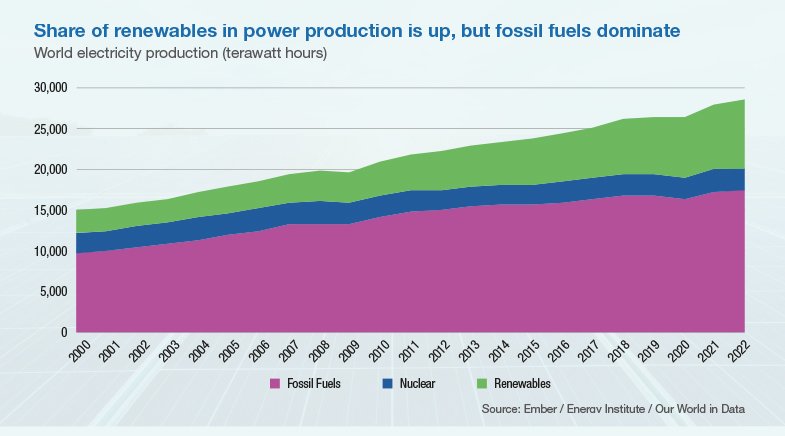
Solar power and storage will dominate the energy sector in the coming years.
howindialives.com
howindialives.com is a database and search engine for public data
Amid the geopolitical rivalries of the past few years, there is one that could benefit the world at large. It is playing out in the solar energy sector, where countries are vying to become the fastest, largest or smartest in the space. In December 2023, when world leaders congregated in Dubai to discuss climate change, the host inaugurated the world's largest concentrated solar power project in the city. In 2023, China alone commissioned more solar photovoltaic (PV) capacity than the entire world did in 2022. Worried about Chinese dominance in solar, some U.S. lawmakers have been pushing the administration to act. In January 2024, Indian Prime Minister Narendra Modi announced a scheme targeting rooftop solar on 10 million houses. Such initiatives could make this the decade of solar power.
THE BIG PICTURE
While renewables in general and solar in particular have been getting attention, the energy sector is still dominated by fossil fuels. They account for over 60% of electricity generated globally, even though it has come down by about 4 percentage points in the past two decades. Renewables have been gaining speed, even as the composition changed during this period. From 19% in 2000, share of renewables, including solar, has grown to 30% in 2022, mostly at the expense of nuclear power.
At the turn of the 21st century, hydroelectric power accounted for over 93% of renewables, thanks to investments made in the previous decades. Now, it accounts for a little over half, giving way to wind and solar. Solar accounts for only about 15% at present. However, it accounted for 74% of all renewable capacity that was added in 2023. According to Bloomberg New Energy Finance, solar PV capacity is projected to cross 725 GW by 2030.
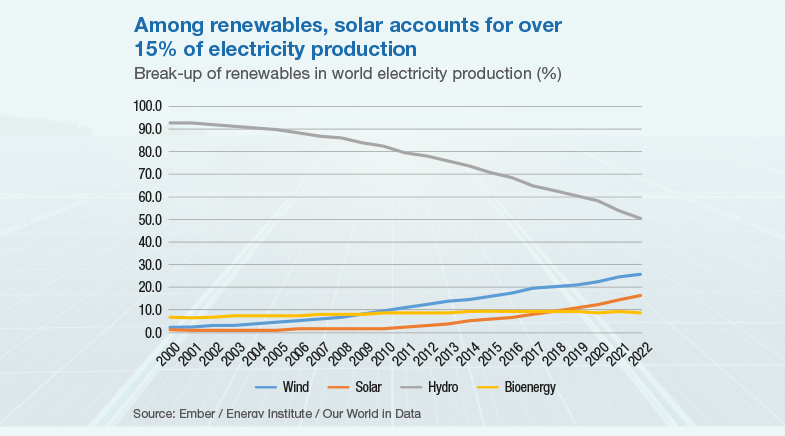
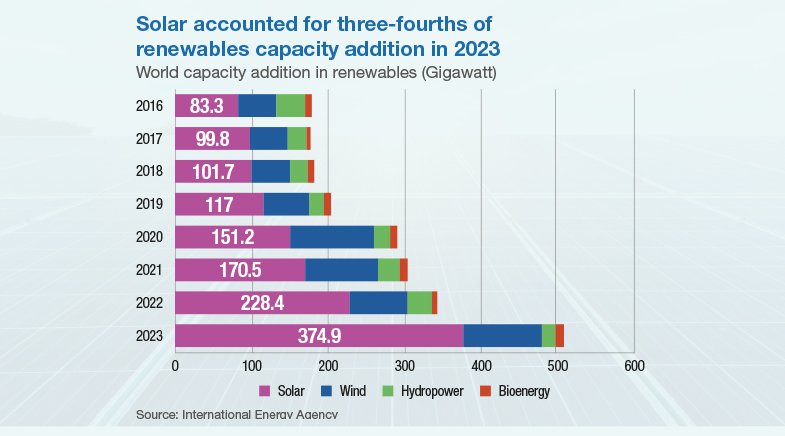
THE COST ADVANTAGE
The growth is driven by a drop in costs. In the U.S., for example, the cost to install solar in the residential segment has dropped by about 50% since 2010. This is despite an increase in the past three years due to supply constraints. Similarly, prices of lithium-ion batteries, which are key to solar power, have dropped by over 80% in the past decade. The decline is partly driven by advancements in solar as well as batteries and storage technologies. The number of annual patent applications in this field has doubled in the past decade, according to the International Renewable Energy Agency. The growth is also driven by increased manufacturing scale and supportive government policies. According to a recent study published in the journal Nature (go.nature.com/3QzlnJd), the solar energy sector is likely to maintain its momentum even without any further climate policies. However, it warned that there were uncertainties "over grid stability in a renewables-dominated power system, the availability of sufficient finance in underdeveloped economies, the capacity of supply chains and political resistance from regions that lose employment".
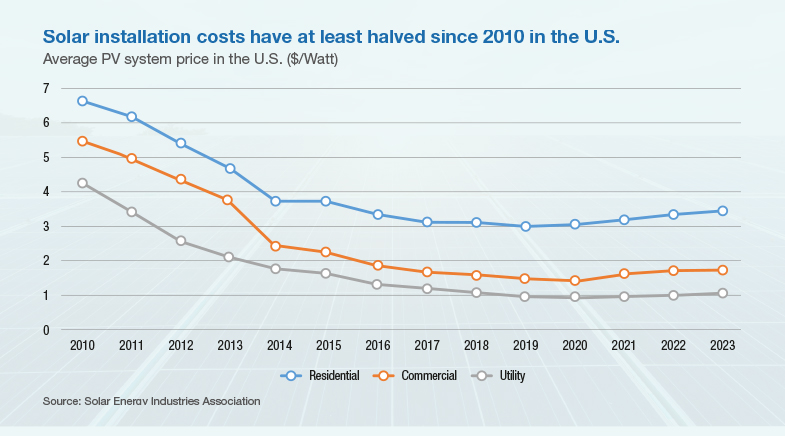
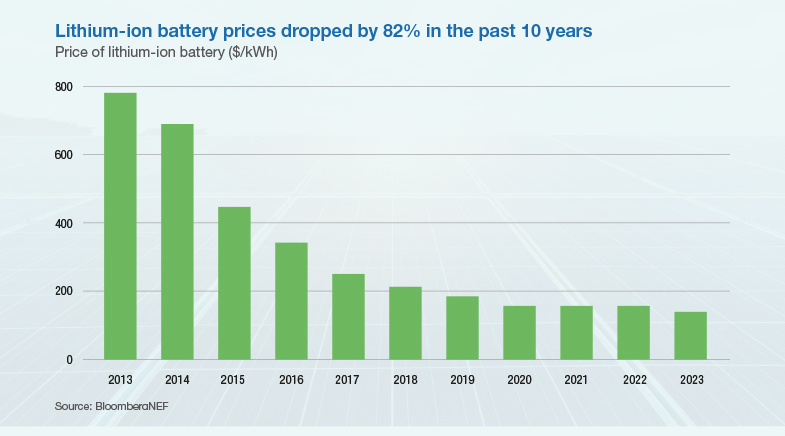

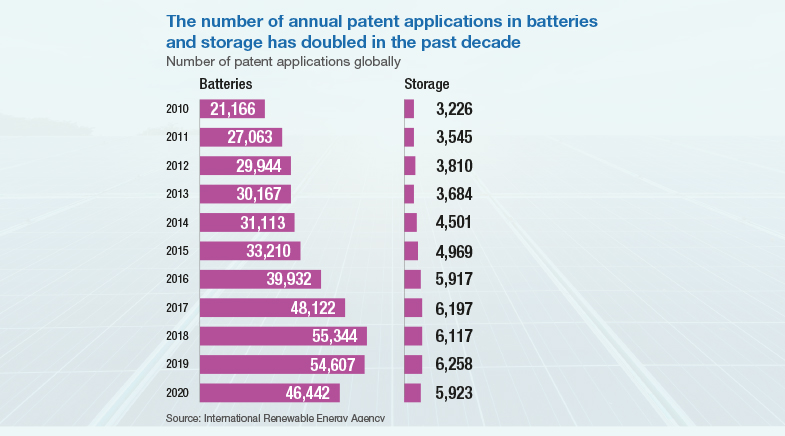
SOLAR SUPERPOWERS
The top five countries in solar — China, the United States, Japan, Germany and India — together accounted for about 70% of the world's total solar PV capacity in 2022. China alone accounted for about 37% in 2022. With aggressive deployment last year, it has grown even more dominant. India is projected to reduce its dependence on coal, while transitioning to renewables, especially solar, which should account for over 30% by 2040.
| Capacity | |
| China | 393 GW |
| U.S. | 113 GW |
| Japan | 83.1 GW |
| Germany | 66.7 GW |
| India | 63.2 GW |
| Australia | 29.7 GW |
| Italy | 25.1 GW |
| S.Korea | 24.1 GW |
| Brazil | 24.1 GW |
| Spain | 20.5 GW |
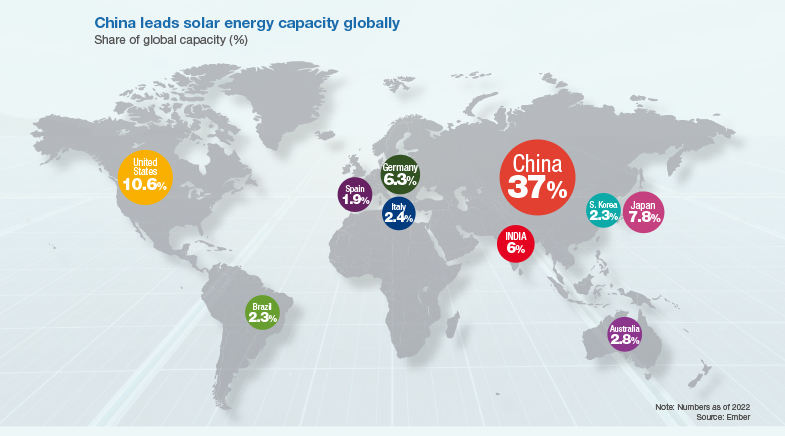
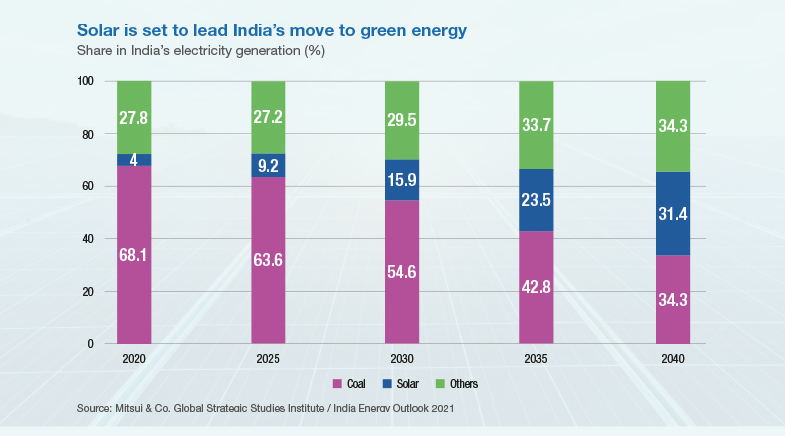
The growth of solar in these countries is driven by favourable policies, including generous feed-in tariffs and tax incentives. Technological advancements and larger scale of operations will continue to drive solar prices down, creating more demand. However, the growth cannot be taken for granted. "Achieving this will require continuous policy ambition and effort from both public and private stakeholders, especially in the areas of grid integration and in addressing policy, regulation and financing challenges," the International Energy Agency wrote in a 2023 report.

Have a
story idea?
Tell us.
Do you have a recent research paper or an idea for a science/technology-themed article that you'd like to tell us about?
GET IN TOUCH














